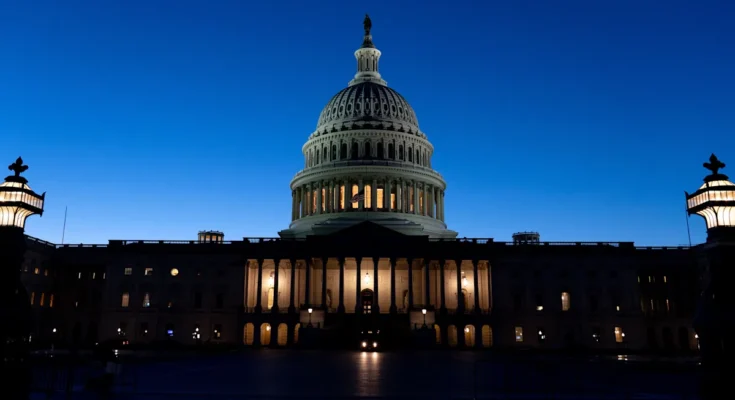The end of the weeks-long partial shutdown of US government operations is near. After the Senate, the DPR, the second chamber of parliament, also decided on a transition budget that will be in effect until the end of January.
To officially end the longest government shutdown in US history, US President Donald Trump still has to sign a legislative package. According to the White House, this will happen on Wednesday evening (local time; Thursday 03.45 CET). In the House of Representatives, where Republicans have a majority, 222 members approved the interim budget and 209 voted against it. Ultimately, there are also some supporters among the Democratic opposition. However, the compromise was highly controversial among Democrats; their core demands are not being met.
Trump’s Republican Party and the opposition Democrats have been embroiled in a heated dispute over the budget for weeks. For this bill to pass in the US Senate, it will need a few votes from the Democratic Party who want to push forward the demands of health care for Americans.
It contains a tax credit for health insurance contributions for more than 20 million people which expires at the end of the year. The Democratic Party wants to expand these subsidies. However, Republicans insist on only negotiating a subsidy extension after the budget freeze ends, which is why many insured people are now threatened with doubling their monthly contributions.
One Republican lawmaker, David Schweikert, compared the political dispute to an episode of Seinfeld: “We’re only 40 days in and I still don’t know what the plot is,” he told Reuters.
White House economic adviser Kevin Hassett estimated on Tuesday that the government shutdown would reduce growth by 1.5 percentage points. Additionally, key economic data for October, such as inflation and the labor market, may never be released due to the government shutdown, the White House acknowledged.
The transition budget is valid until the end of January
Given America’s polarized politics, a breakdown in government affairs is not unusual, as the two sides are often unable to reach a timely agreement. There have been more than a dozen similar service shutdowns in the US since 1981, many of which lasted only a day or two. The current government shutdown is the longest in US history. On Wednesday it was 43 days. The previous longest shutdown lasted 35 days at the turn of 2019 – that is, during Trump’s first term as president.
Over the weekend, some Democratic representatives in the Senate finally gave in and helped Republicans get the necessary votes. Since then, the media has speculated why the Democratic Party changed course. In return, Republicans promised that health care costs would be decided in Congress in December. However, this initiative was considered almost futile in the DPR.
If Trump signs a temporary budget, the government shutdown will end for now. The temporary budget is only valid until the end of January. If no regular budget is passed by then, there could be another shutdown starting in February.



